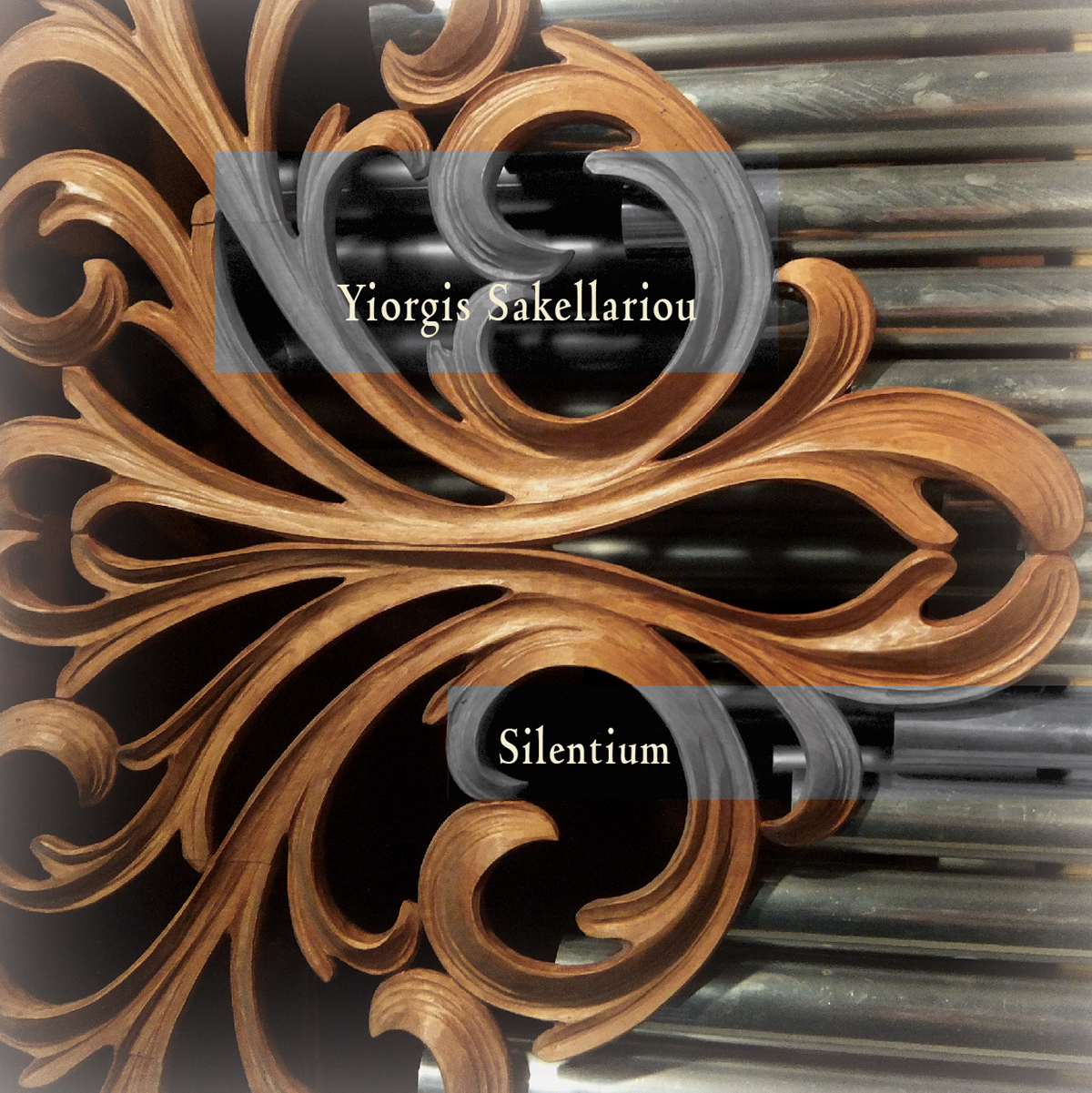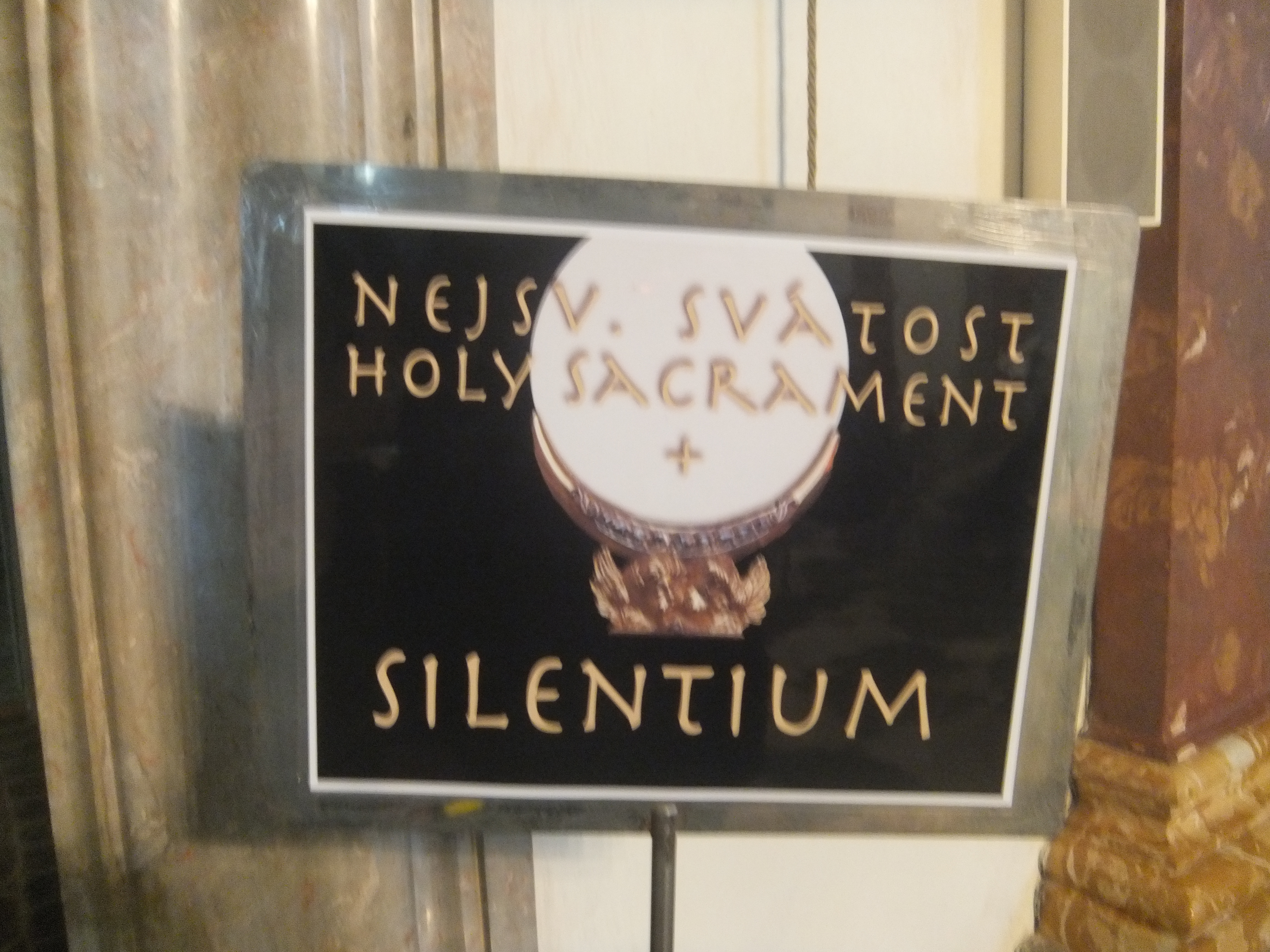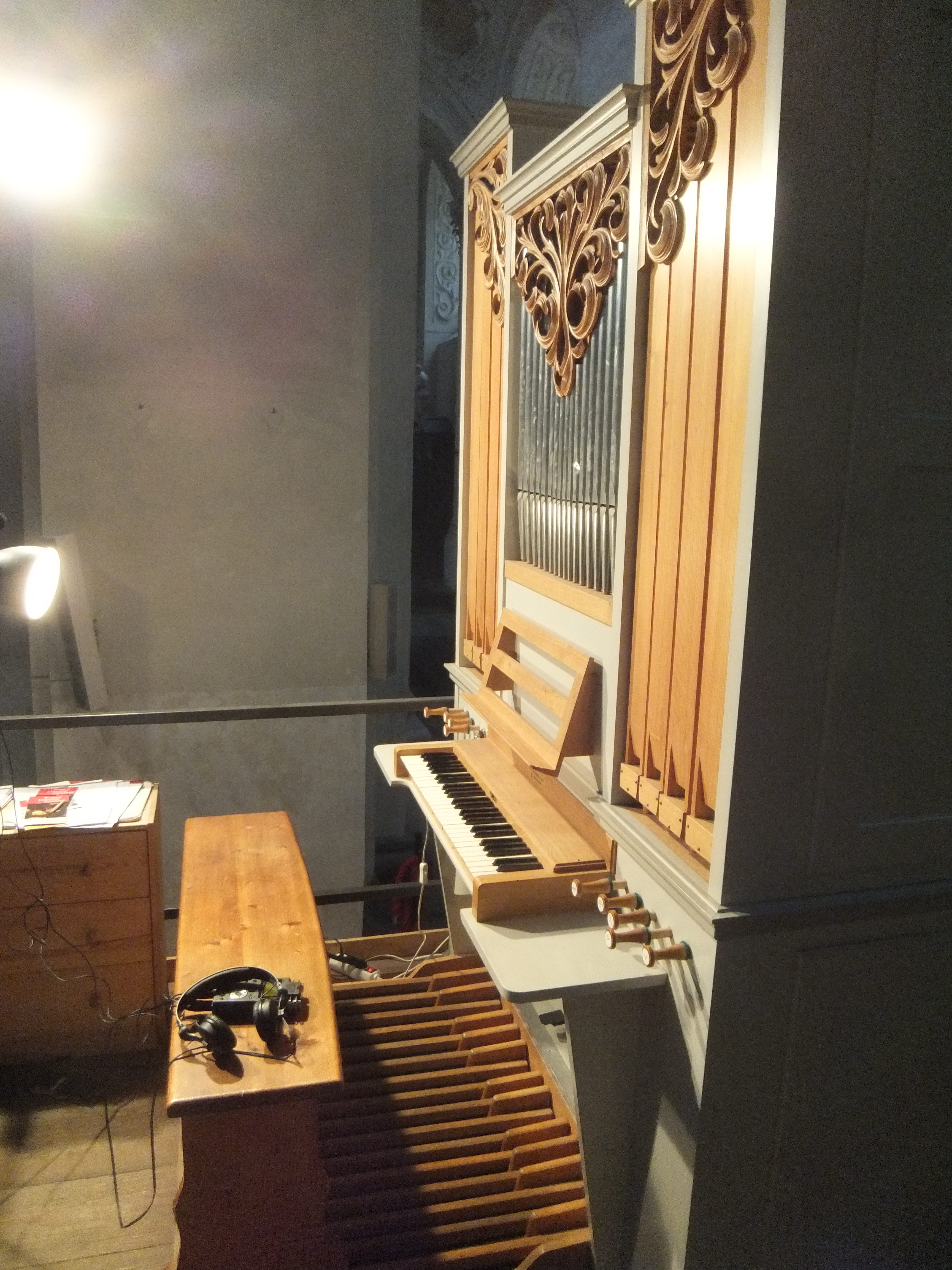
This text describes the processes of composing Silentium, an electroacoustic piece conceived during a residency in Prague in December 2015 [1]. The piece interrogates the notion of spirituality in electroacoustic music by utilizing sounds of religious origin and ponders on their effect on studio work and acousmatic performance. Silentium was released on CD in November of 2016 by Pogus Productions [2].
The selection of sound sources for Silentium was primary inspired by Mortuos Plango Vivos Voco, arguably the most significant work by British composer Jonathan Harvey. Composed in 1980, the piece is based on two sound sources: the tenor bell at Winchester Cathedral in England and the voice of Harvey’s son who was a chorister there. The sounds were digitally processed at the IRCAM institute in Paris, with the aid of MUSIC V – one of the first computer music programs to process digital sounds – and resulted in an octaphonic electroacoustic composition. In a similar manner, Silentium is based on sounds of church bells, recorded in Prague. Moreover, the piece includes sounds of church organs that substitute the voice as an organic and performed element.
The title of the work is inspired by the “Silentium” signs I regularly saw displayed in churches in Prague. Silentium reflects on what author and broadcaster David Hendy calls worshipful silence. This is a term he used to describe the silence of audiences as it has been established in the western concert tradition since the 19th century [3]. This attentive silence, required in both concert halls and temples, is an active condition where listening begins, it is the liminal state between the natural and the supernatural world. Silentium attempts to contextually and sonically bridge the churches’ “silentium” with the worshipful silence of musical performances.


Bells, organs and silences
The sound of bells plays a very significant role in the global history of sound and listening. Throughout the centuries the ringing of bells has been creating for human beings a notion of space and passing time, alongside generating a deep feeling of communication, together with a sense of protection from evil spirits. Moreover, the sound of bells shapes the sonic identity and marks the territory of the community that uses them. The bell creates a focal point, a spatial and sonic centre around which the believers form a sacred space that aids them in finding order and meaning in the world. The bell sound may be an imaginary metaphor for the voice of God and its ritualistic function can also act as an instrument of authority and power.
Returning to Harvey’s piece, the complete phrase from which it took its title is “Horas Avolantes Numero, Mortuos Plango: Vivos ad Preces Voco” which means “I count the fleeing hours, I lament the dead: the living I call to prayer”. The phrase was carved on the tenor bell that Harvey recorded. The bell’s message, originally believed to be transmitted through sound every time the bell rang, is a calling to pray and meditate on passing time and death. Listening to the bells is a form of contemplation and besides having the utilitarian purpose of counting time and communicating messages, their sound is an invitation to trigger and respond to profound human thoughts and emotions.
The recordings of bells during the residency, and their treatment in the studio, negotiated Harvey’s approach and simultaneously reflected on the history and ideas of bell ringing. How much, if any, of the ancient significance and meaning of the sound of bells remains present in a modern European city like Prague and, in extension, in contemporary society? How much of the utilitarian and symbolic function of the bells can be translated into music and how can it inform the composition of an electroacoustic piece?
The recordings focused on the extended soundscape created by the bells, the ways in which they were blending with other city sounds, and not solely on their texture and harmonic content. This recording strategy was influenced by the work of ethnomusicologist and recordist Steven Feld who in his ongoing project Time of bells is recording not only the sounds of bells from around the world but, moreover, how they resonate and mutually affect other sound sources. The recordings in Prague were made from a similar perspective as I was interested not only in the sound source and its qualities but also in the relations with other sounds and their impact on the environment and its inhabitants [4].
Additionally, recording sounds for Silentium explored the extended properties of a church’s sonic atmosphere. When entering a church with an attention on listening, several discreet yet significant sounds subtly emerge; echoes of quietness created by whispers reverberating, the crackle of wooden chairs, a door closing, water dripping down the pipelines. Some of these sounds were the result of short improvised performative actions. The sonic exploration of a church included me walking on old boards to create crackles and clapping my hands or slumming doors to capture the building’s acoustics. Also, I spend a lot of time in silence, listening to and recording quiet atmospheres created by outside sounds blending with interior ones, enabled by and echoing in the architecture of the church.
Together with bells and churches’ interiors, Silentium’s third source of material is based on recordings of church organs. Before my residency in Prague I had no experience in how organs are played. With the purpose of learning approaches and techniques of exploring the instrument, I met improvising musician Veryan Weston in Saint Mary Magdalene church at Welwyn Gardens City. I have no training in keyboard instruments, however the organ offers various possibilities of sound production without necessarily being skilful on playing notes on the manuals. Weston explains: “There is a more physical relationship between the instrument and the player. When each stop is very carefully and slowly pulled while a key is pressed, a myriad of uncertain transitional stages of sound is produced. All of which gives the organist a huge scope for creative use of the mechanisms to produce subtle changes by minute pushes or pulls of the stops” [5]. At Welwyn Gardens City Weston demonstrated to me these ideas and methods which I utilized in my recording sessions in Prague by experimenting on timbre and micro-tonal changes.



Studio transformations
The purpose of processing bells, church and organ sounds in Silentium is to raise awareness about their floating and dynamic identity, instead of perceiving them as fixed objects with particular connotations. In other words, besides considering sound processing as a technological achievement, the aim is to expand the sounds’ physical boundaries and make them escape from their original meaning so that they can become something else, a ghost of themselves. The use of digital technology is not merely a neutral tool for recording and manipulating sound but functions as a spiritual revelation. It is a transformation which takes place on the threshold of sonic perception, between the original and the processed, the real and the imagined, the audible and the silent.
When working on Mortuos Plango Vivos Voco, with state-of-the-art software at that time, Harvey acknowledged the huge potentials of the technological tools that were available to him, nonetheless preferred not to be totally seduced by them. Instead, he emphasized that “the territory that the new computer technology opens up […] will only be conquered by penetration of the human spirit” [6]. Harvey manipulated the sounds not as a technical experiment but to initiate a dialogue between technology and spirituality. Composition, thus, is not a mere study on sophisticated music technology but, as Toru Takemitsu has described it, a spiritual effort [7]. Similarly, Silentium employs the power of music to explore a spiritual world. The piece negotiates the idea of sacred spaces, human communication and silent contemplation. It draws inspiration from religious context and uses the capacity of sound recording and processing technology to bring these ideas into existence.
The atmosphere of quiet churches is musically stimulating and fuels the composition with structural ideas. When entering churches in Prague I was leaving behind the loud and intense world of everyday reality to go into a quiet environment which was transforming into an alternative cosmos. The outside urban noise was filtered into subtle resonations and the sense of fast tempo, dictated by the movement of people, cars and trams, slowed down to an almost complete stillness. The composition follows similar models in its structure. Silentium juxtaposes and combines full-range clusters, barely audible low rumbles, unprocessed field recordings, crackles and hisses in various dynamics and lengths. The antithesis of volume levels, the dramatic dynamic changes aim to open passages between worlds and stimulate a primitive effect of submerging into the mysterious.
Return to silence
Harvey’s interrogations into compositions with religious context stimulated constructive criticism and raised crucial questions. Are these pieces of music rituals in their own right or contributions to pre-existing ceremonies? Are they functioning as aid to meditation and prayer or have an independent aesthetic meaning and goal? Harvey clarified that his compositional interest does not lay in accompanying prayer and had no intention in polarizing the listeners by forcing their attention to any particular religious practice. For him, music and religion form a continuity, accessible to both believers and non-believers [8].
Religion and music are both emerging from practice and are not results of pre-existing theories. Their meanings and purposes evolve throughout time and in relation to individual social settings. What can be perceived as sacred or spiritual in art is not necessarily the expression of the divine, but, perhaps paradoxically, an exploration of the deepest human dimensions. The concept of the divine is discarded and transcendence is not understood in religious terms but as a physical experience of being human, in combination with the acknowledgement of humankind’s “collective existence as social beings”. The sacred in art remains un-portrayed, un-symbolized and hidden in the ineffable [9].
Author and researcher Marcel Cobussen writes that music is neither completely godly, nor entirely earthly but instead creates and maintains an open space between the human and the divine world. He also argues that music is not necessarily a tool to access a spirit world but an actual experience of the spiritual. Spirituality in music is a floating concept, constantly transforming, escaping categorization and clear definition [10]. There is no spiritual music as such; it is the relationship with music that can be spiritual, the merging of object and subject, of sound and listeners, what in religious terms can be described as unity. Spiritual listening functions beyond logic, it remains unexplained as it can only be sensed. Like religion and music, spiritual listening is not based on theory, it is an action, something that does not pre-exist but happens in a “here-and-now” world.
Silentium embraces the impossibility of expressing the ineffable and aims at triggering a spiritual experience, without direct dependence on religious connotations and with an openness to an unforeseen Other. The sounds of church organs and bells initiate a quest for transformation, a search for discovering something that exists between the somatic and the ethereal. Silentium’s ambiguous and indefinite sonic world creates a physical and imaginary space where Harvey’s “Preces Voco” can occur. Silentium evolves in and beyond silence as its sounds emerge from the inaudible and ultimately return to it.
Yiorgis Sakellariou
London, February 2017
References and notes
- I was kindly invited by Školská 28 gallery and supported by the Agosto Foundation.
- http://www.pogus.com/21088.html
- More about silences and bells on Hendy’s ‘Noise: A Human History of Sound and Listening’ (2013)
- Several recordings are uploaded at the Sounds Of Prague website: http://sonicity.cz/playlists/creator/230
- Weston writes about organs and churches as performance spaces here: http://www.emanemdisc.com/E5207.html and here: https://tuningoutblog.wordpress.com/2014/04/14/a-case-for-churches-as-performance-spaces/
- Harvey’s thoughts on his composition http://www.bbc.co.uk/radio3/cutandsplice/mortuos.shtml
- From Takemitsu’s book ‘Confronting Silence – Selected Writings’ (1995)
- More about Harvey in Michael Dowens’s book ‘Jonathan Harvey – Song Offerings and White as Jasmine’ (2009)
- From the article ‘The sacred in art is about more than religion’, by Kenan Malik https://www.theguardian.com/commentisfree/belief/2014/mar/18/sacred-art-religion-humans
- Cobussen discusses these issues in his book ‘Thresholds: Rethinking spirituality through music’ (2008)

